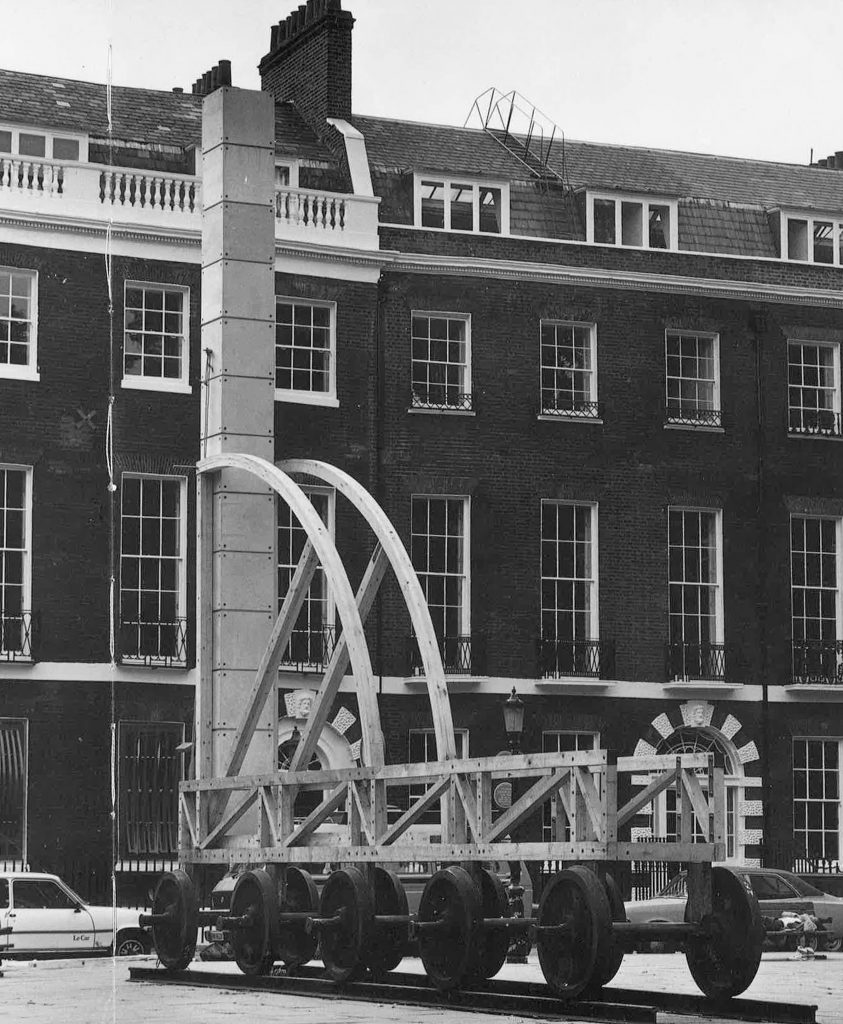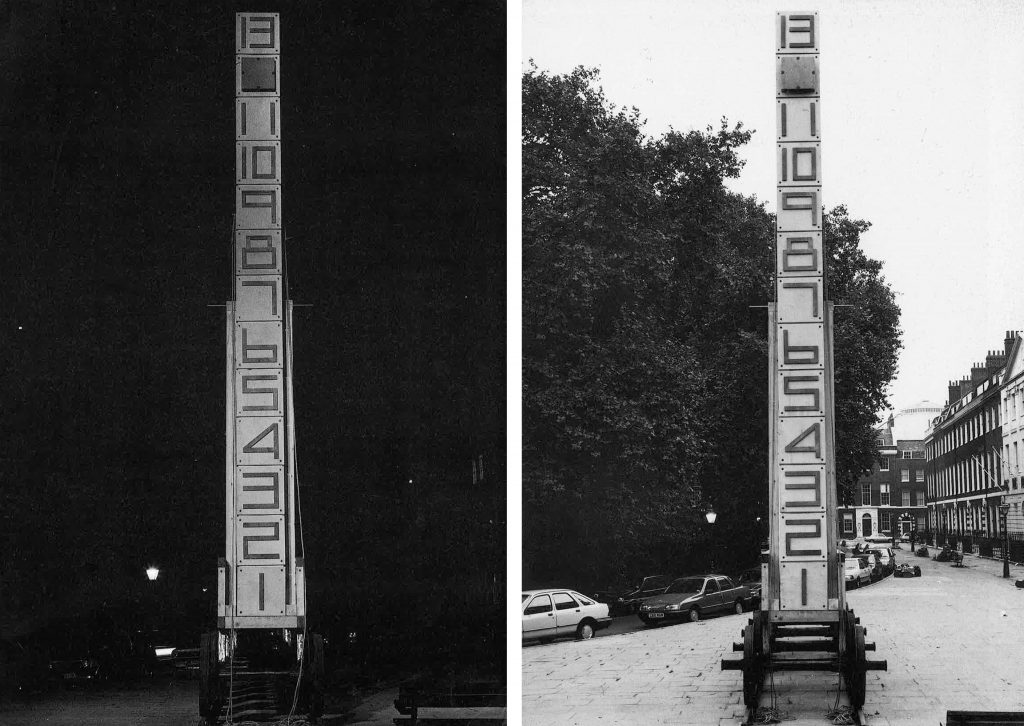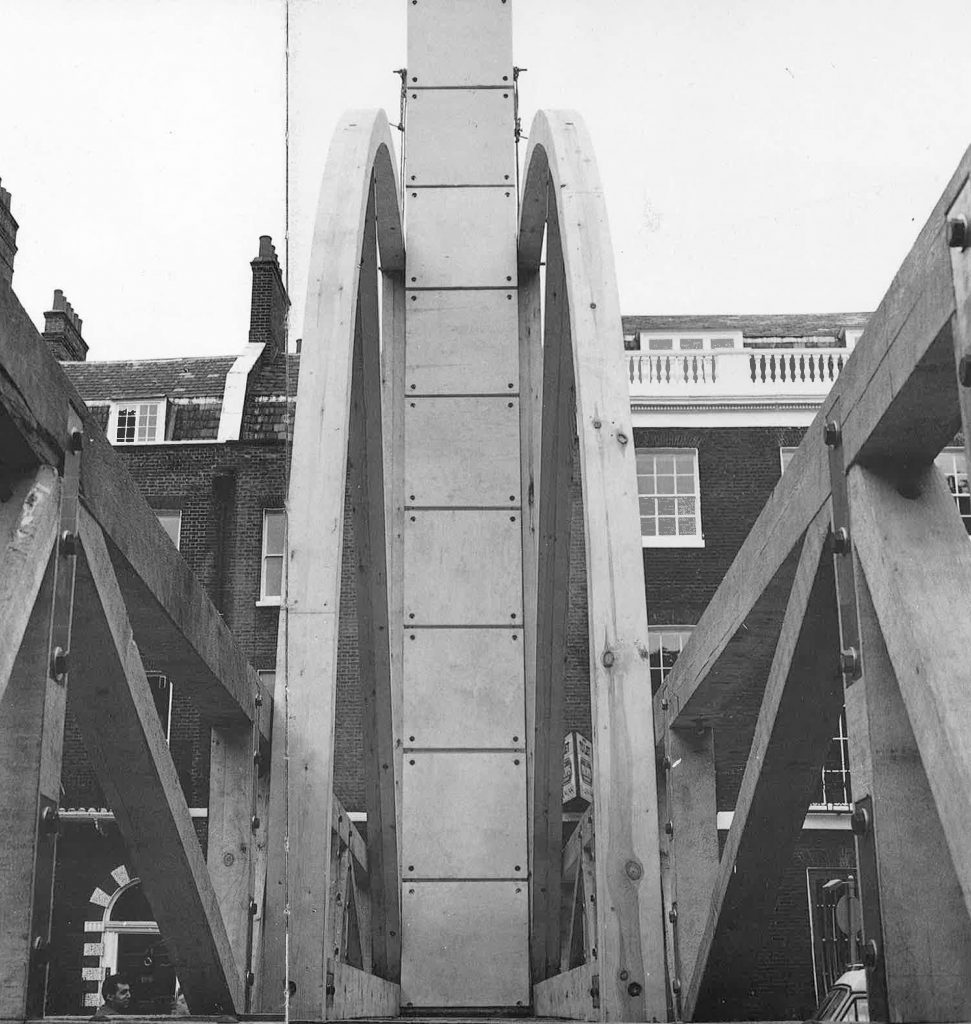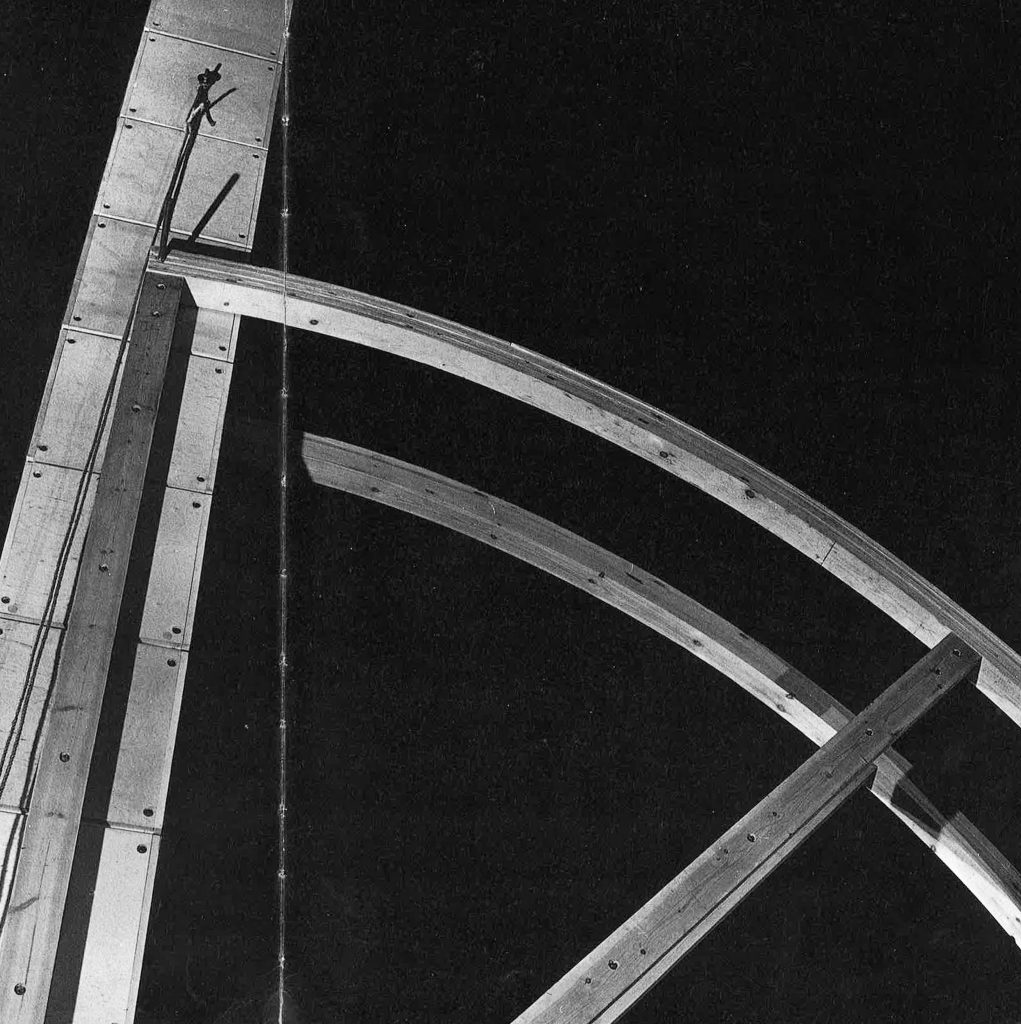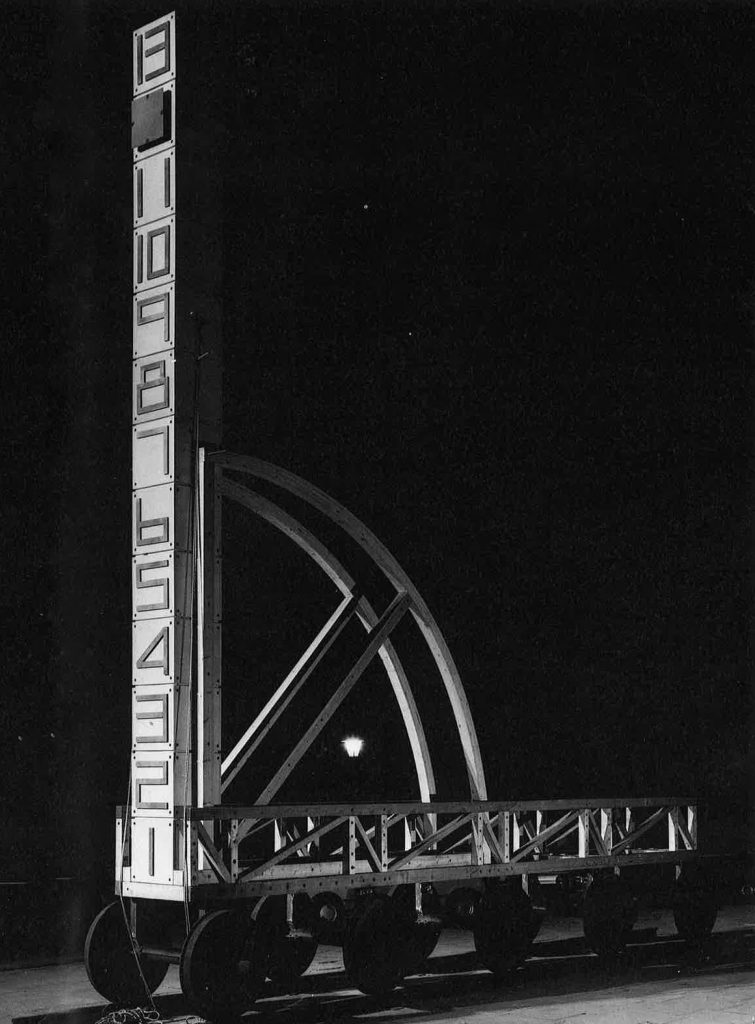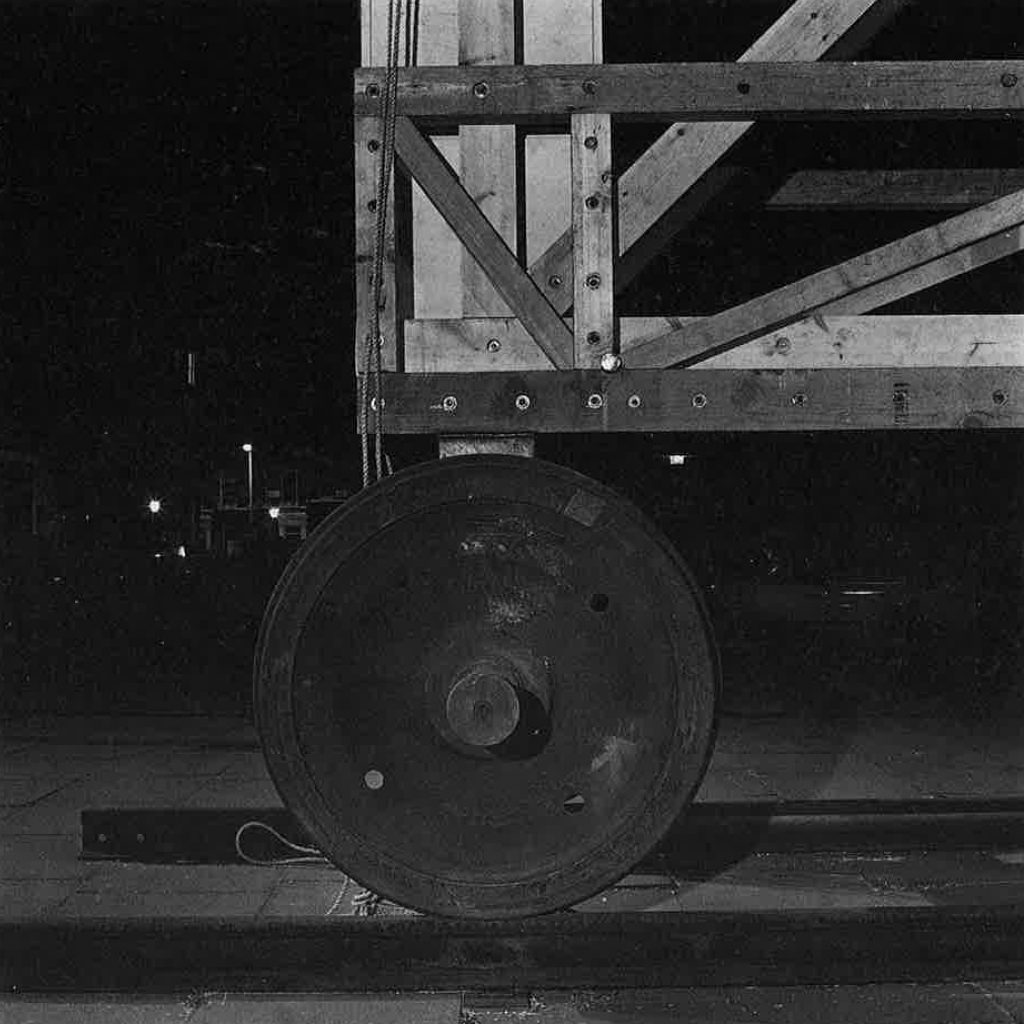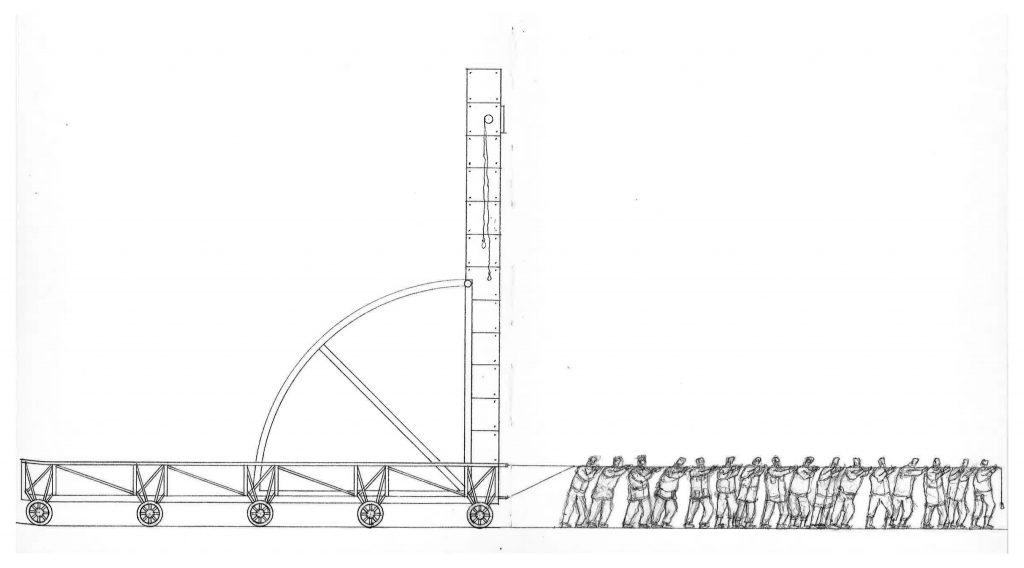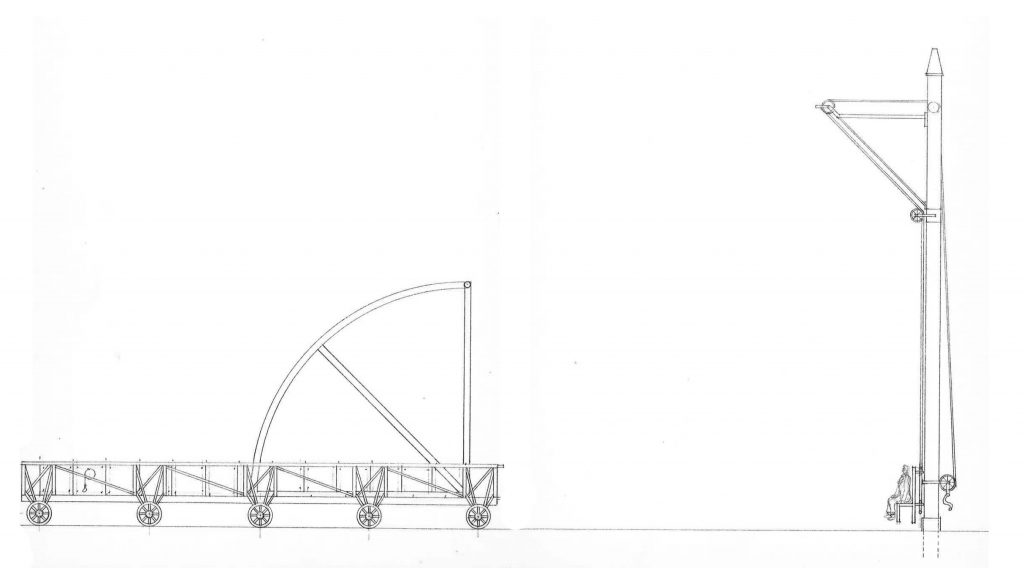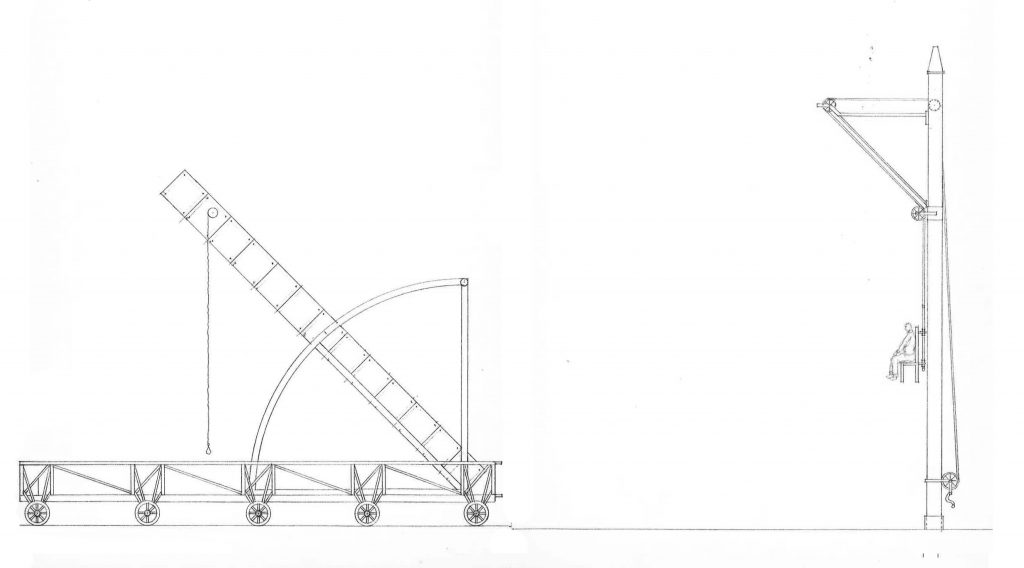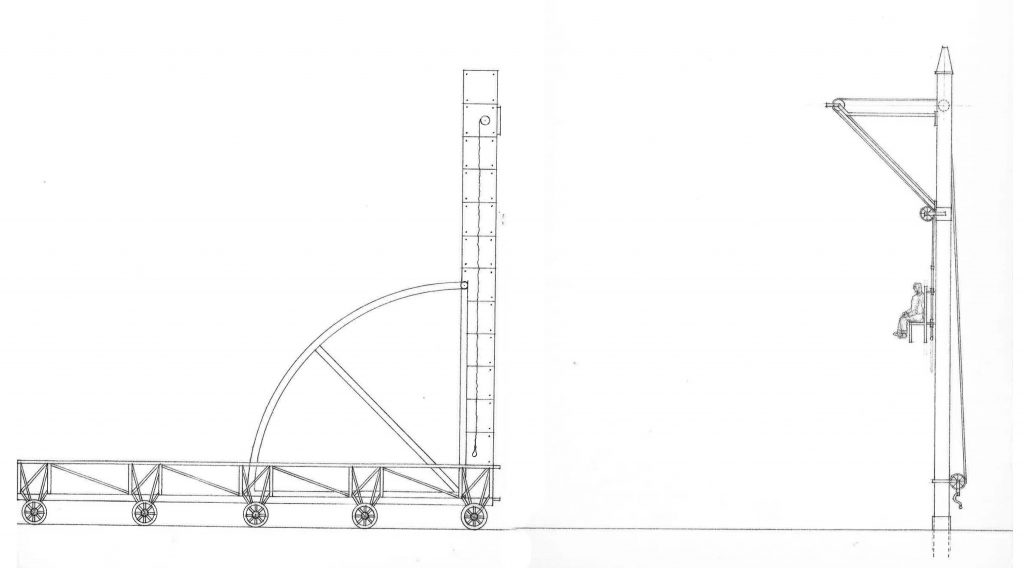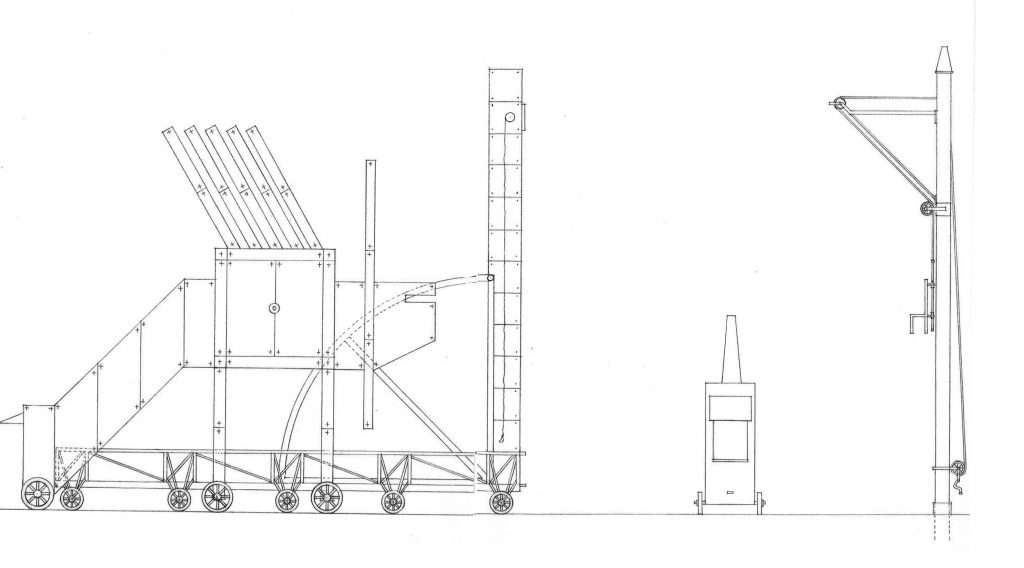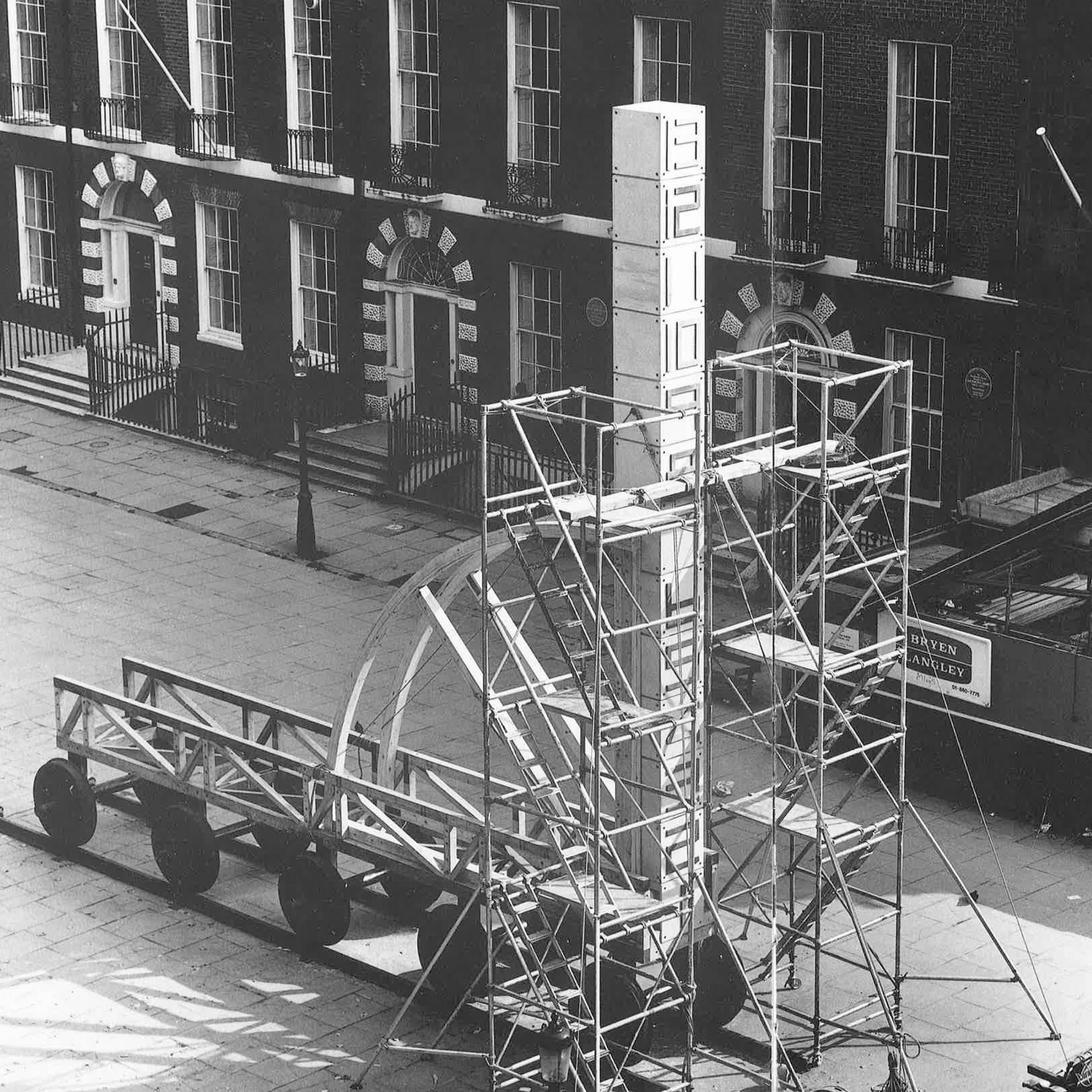Hejduk’s masques are not part of the facile pluralism of American tolerance. They are severe models that explain the loneliness of ‘one who refused to participate.’ The clock seems dry and discursive as David’s sketch of Marie-Antoinette on her way to execution. And all of this is as it should be: Hejduk is involved in construction models that must survive what the theologian Arthur Cohel called the ‘Tremendum’, the caesura of the transcendental. The meanings of Hejduk’s clocks are wrested from the loss of meaning. That is why his ‘leaving-out buisiness’ is so tumultuous and resonant. His theological clock is a kind of late-Romantic protest in the style of Blake against all reductive clock universes. His clocks are no more discursive than Johns’ maps, but they are the supreme symbols of an age that demands a representation of its desire.
Las máscaras de Hejduk no forman parte del pluralismo fácil de la tolerancia estadounidense. Son modelos severos que explican la soledad ‘del que se niega a participar’. El reloj parece seco y discursivo como el boceto de David de María Antonieta en su camino a la ejecución. Y todo esto es como debe ser: Hejduk se involucra en la construcción de modelos que deben sobrevivir a lo que el teólogo Arthur Cohel llamó el ‘Tremendum’, la cesura de lo trascendental. Los significados de los relojes de Hejduk son arrancados de la pérdida de significado. Es por eso que su ‘negocio de abandono’ es tan tumultuoso y resonante. Su reloj teológico es una especie de protesta tardorromántica al estilo de Blake contra todos los universos reduccionistas del reloj. Sus relojes no son más discursivos que los mapas de Johns, pero son los símbolos supremos de una época que exige una representación de su deseo.
Hejduk knows that poetry does not signify effusion, sentiment, dithyramb or impressionism. If anything, his poetry has a kind of sublime empiricism, a respect for fact and for the fact of fiction. His poetry has the clear cadential bias of the Amricanist in the William Carlos Williams. His clock is part of an epic, pluralist, and imaginary city that he is always building in number, weight, and measure, as collagist as Williams’s ‘Paterson’ and even more a critique of all deracination. Hejduk’s strength is in his critique of the nostalgias. His architecture and poetry refute the use of tradition as complaisant ground.
Hejduk sabe que poesía no significa efusión, sentimiento, ditirambo o impresionismo. En todo caso, su poesía tiene una especie de empirismo sublime, un respeto por el hecho y por el hecho de la ficción. Su poesía tiene el claro sesgo cadencial del amricanista en el William Carlos Williams. Su reloj es parte de una ciudad épica, plural e imaginaria que siempre está construyendo en número, peso y medida, tan collagista como el ‘Paterson’ de Williams y más aún una crítica a todo desarraigo. La fuerza de Hejduk está en su crítica de las nostalgias. Su arquitectura y poesía refutan el uso de la tradición como terreno complaciente.
Fragment of “The clock of Deletion: Time and John Hejduk’s architecture” by David Shapiro, in The Collapse of Time and Other Diary Constructions.
Images from The Collapse of Time and Other Diary Constructions.
